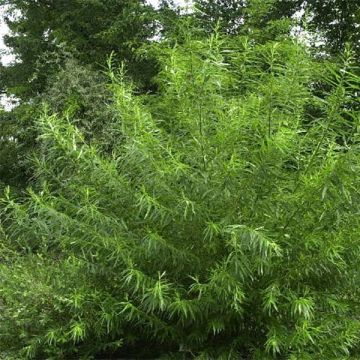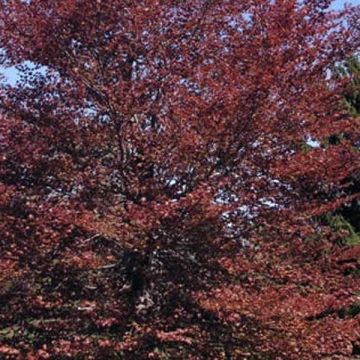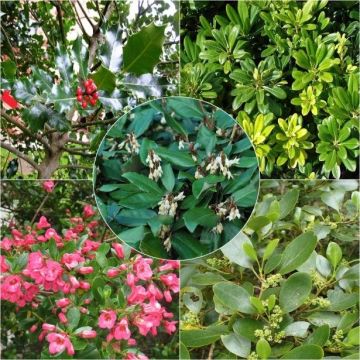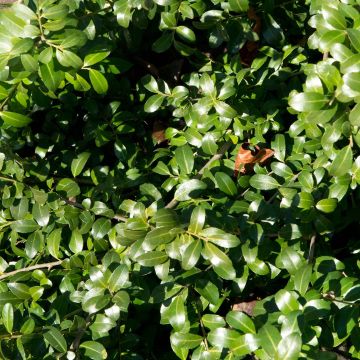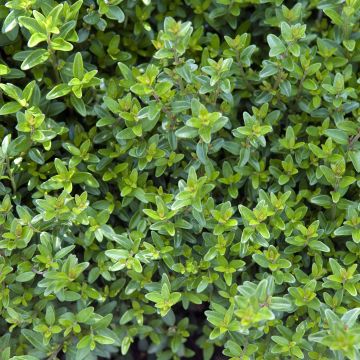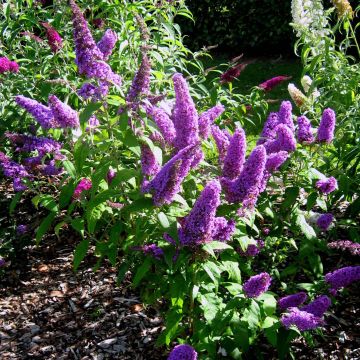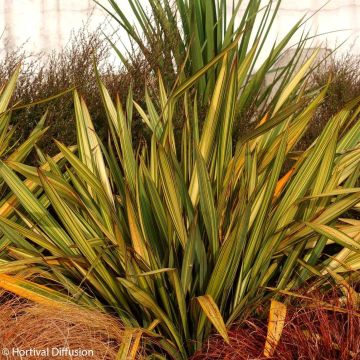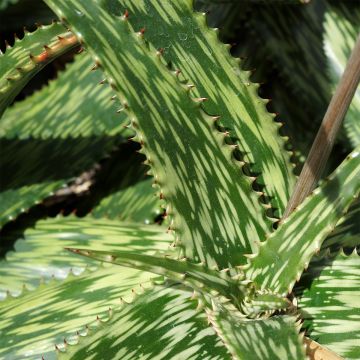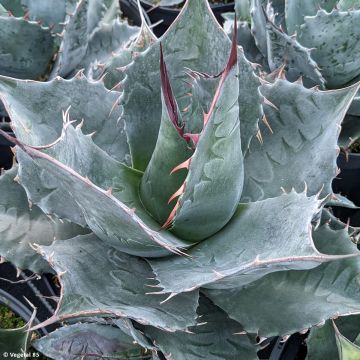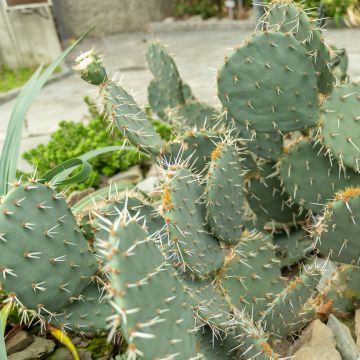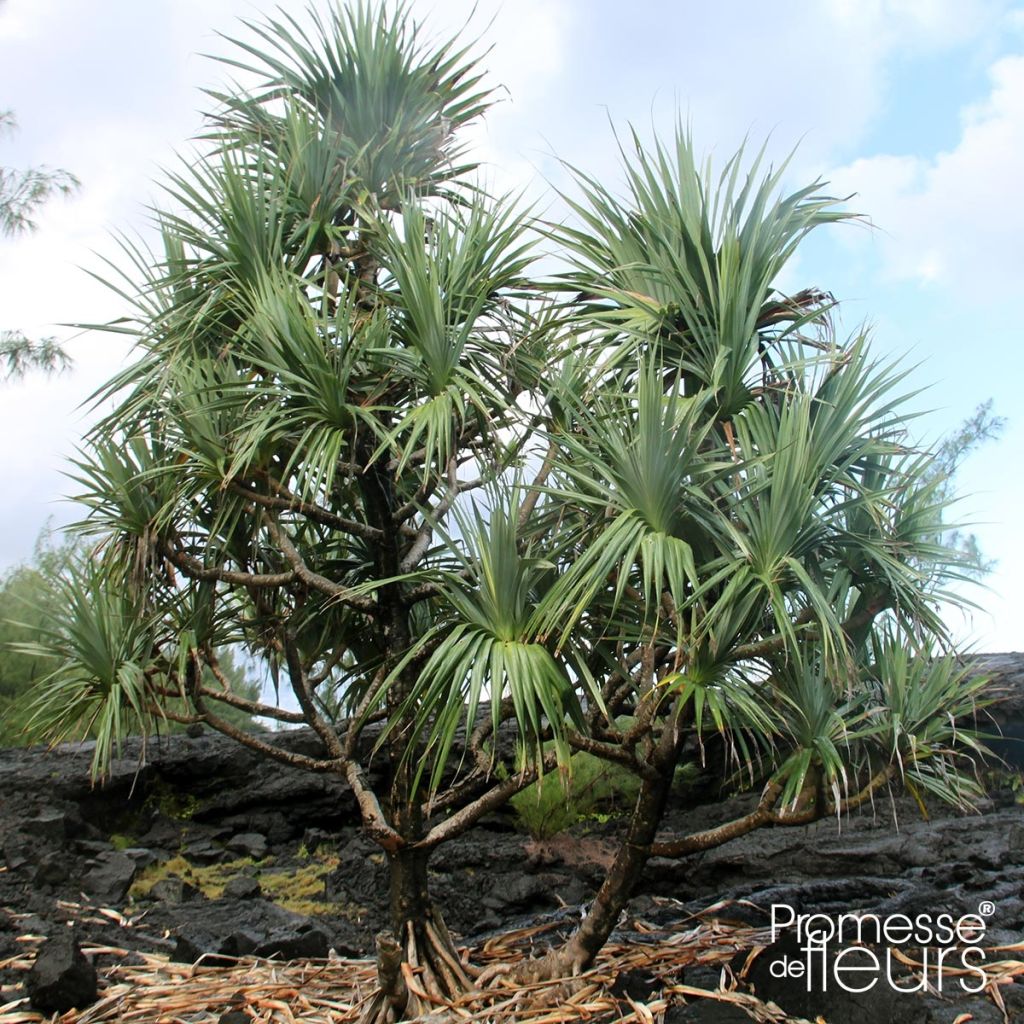

Pandanus utilis - Vacoa


Pandanus utilis - Vacoa


Pandanus utilis - Vacoa
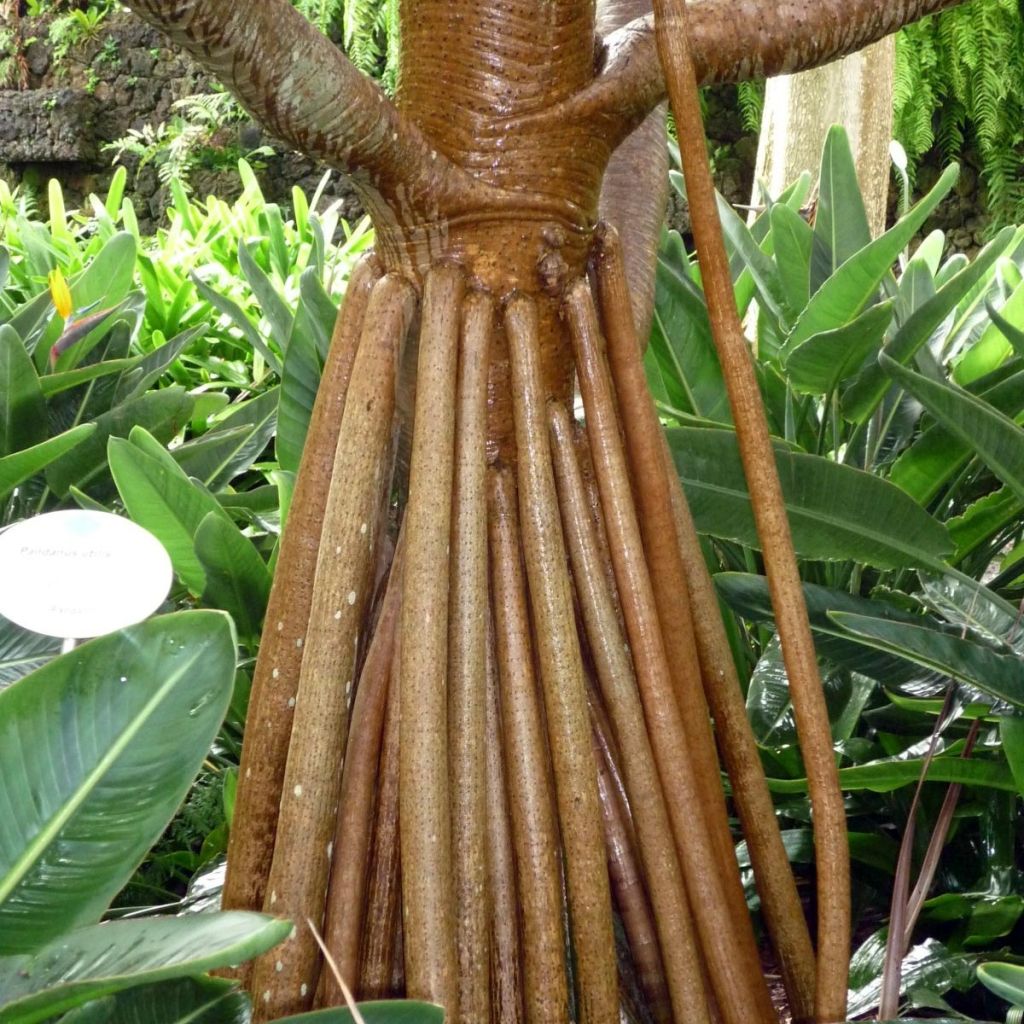

Pandanus utilis - Vacoa


Pandanus utilis - Vacoa
Pandanus utilis
Pandanus utilis
Screw Pine, Common Screwpine
Why not try an alternative variety in stock?
View all →This plant carries a 24 months recovery warranty
More information
We guarantee the quality of our plants for a full growing cycle, and will replace at our expense any plant that fails to recover under normal climatic and planting conditions.
From €5.90 for pickup delivery and €6.90 for home delivery
Express home delivery from €8.90.
Does this plant fit my garden?
Set up your Plantfit profile →
Description
The Pandanus utilis, locally known as Vacoa or Pimpin when referring to its fruits, is a large exotic plant that will delight enthusiasts of unusual tropical species. It has a unique appearance that always catches attention when discovered on the beaches of Réunion or Madagascar; this opulent plant, firmly stays on the ground relying on its aerial roots like supports. At the top of its robust false trunk, one or more beautiful rosettes of leaves, resembling those of yuccas, flourish. Despite being frost-sensitive, Vacoa remains an original and highly decorative collection plant. It will adorn the terrace or balcony during the summer, and the greenhouse or conservatory during winter. Provide it with well-drained soil, light, and regular watering.
The Pandanus utilis belongs to the family of pandanaceae, which gathers around 600 species of perennial, shrubby, or arborescent herbaceous plants, occupying a vast region from eastern Africa, Madagascar, to the Pacific islands including Malaysia and Australia. The Pandanus utilis is native to the shores of the Indian Ocean and is now widespread in all tropical regions up to southern Spain. In the wild, it reaches a height of 15 to 20 m (49 to 66ft) with a width of 6 to 10 m (20 to 33ft). When cultivated in a pot, its dimensions will be much more modest.
A moderately fast-growing shrub, the Pandanus utilis develops a kind of straight and thick, smooth, ramified trunk of light brown colour. At mid-height, aerial roots develop and plunge into the ground. This original root system is an excellent adaptation to unstable sandy soils and strong winds. At the top of the false trunk, and then on each of its branches, a beautiful flared crown composed of ribbon-like and pointed leaves grows, sheathing at the base, with spiny and reddish edges arranged in a spiral in 3 concentric series. Each leaf measures up to 2 m (7ft) long and 3 to 11 cm (1 to 4in) wide. In this dioecious species, there are male individuals distinct from female individuals. Flowering occurs on mature subjects and under appropriate climatic conditions. The pendant panicles of male flowers are fragrant and enclosed in white bracts. Female flowers are grouped in small bouquets or greenish heads. Once pollinated, the female flowers give way to edible fruits, similar to pods. In Réunion, the white flesh contained in the receptacle of the still green fruit, called "pimpin", is consumed after cooking.
The Vacoa has a unique presence that adds a touch of exoticism to any decor. From May to September, place it on the terrace or balcony, alongside Phormiums, tree ferns, or Cycas, for example. Then bring it indoors into a frost-free greenhouse, a winter garden, or a bright conservatory.
Report an error about the product description
Pandanus utilis in pictures




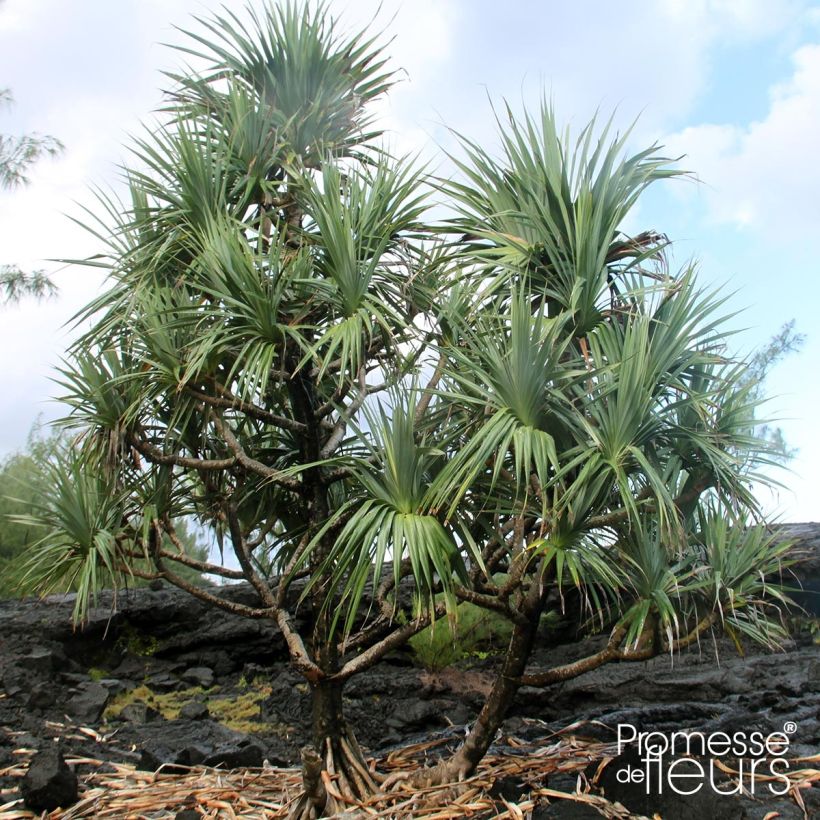



Plant habit
Flowering
Foliage
Botanical data
Pandanus
utilis
Pandanaceae
Screw Pine, Common Screwpine
Madagascar
Other Shrubs A to Z
Planting and care
Plant the Pandanus utilis in a pot so that it can be protected from frost in winter. It perishes below 0 °C. It is a sun-loving plant and requires well-drained, sandy soil. Choose a container of 30 to 50 litres, with drainage holes at the bottom, filled with a mix of equal parts potting soil and sand. Apply fertilizer for green plants (or universal) throughout the growth period and water regularly; the substrate should not dry out but should not be too wet either. Protect your plant from the first cold weather, place it in a slightly heated veranda, in a frost-free greenhouse, or in a cool, bright room in the house (avoid direct sunlight). Regularly mist the foliage.
Planting period
Intended location
Care
This item has not been reviewed yet - be the first to leave a review about it.
Evergreen shrubs
Haven't found what you were looking for?
Hardiness is the lowest winter temperature a plant can endure without suffering serious damage or even dying. However, hardiness is affected by location (a sheltered area, such as a patio), protection (winter cover) and soil type (hardiness is improved by well-drained soil).

Photo Sharing Terms & Conditions
In order to encourage gardeners to interact and share their experiences, Promesse de fleurs offers various media enabling content to be uploaded onto its Site - in particular via the ‘Photo sharing’ module.
The User agrees to refrain from:
- Posting any content that is illegal, prejudicial, insulting, racist, inciteful to hatred, revisionist, contrary to public decency, that infringes on privacy or on the privacy rights of third parties, in particular the publicity rights of persons and goods, intellectual property rights, or the right to privacy.
- Submitting content on behalf of a third party;
- Impersonate the identity of a third party and/or publish any personal information about a third party;
In general, the User undertakes to refrain from any unethical behaviour.
All Content (in particular text, comments, files, images, photos, videos, creative works, etc.), which may be subject to property or intellectual property rights, image or other private rights, shall remain the property of the User, subject to the limited rights granted by the terms of the licence granted by Promesse de fleurs as stated below. Users are at liberty to publish or not to publish such Content on the Site, notably via the ‘Photo Sharing’ facility, and accept that this Content shall be made public and freely accessible, notably on the Internet.
Users further acknowledge, undertake to have ,and guarantee that they hold all necessary rights and permissions to publish such material on the Site, in particular with regard to the legislation in force pertaining to any privacy, property, intellectual property, image, or contractual rights, or rights of any other nature. By publishing such Content on the Site, Users acknowledge accepting full liability as publishers of the Content within the meaning of the law, and grant Promesse de fleurs, free of charge, an inclusive, worldwide licence for the said Content for the entire duration of its publication, including all reproduction, representation, up/downloading, displaying, performing, transmission, and storage rights.
Users also grant permission for their name to be linked to the Content and accept that this link may not always be made available.
By engaging in posting material, Users consent to their Content becoming automatically accessible on the Internet, in particular on other sites and/or blogs and/or web pages of the Promesse de fleurs site, including in particular social pages and the Promesse de fleurs catalogue.
Users may secure the removal of entrusted content free of charge by issuing a simple request via our contact form.
The flowering period indicated on our website applies to countries and regions located in USDA zone 8 (France, the United Kingdom, Ireland, the Netherlands, etc.)
It will vary according to where you live:
- In zones 9 to 10 (Italy, Spain, Greece, etc.), flowering will occur about 2 to 4 weeks earlier.
- In zones 6 to 7 (Germany, Poland, Slovenia, and lower mountainous regions), flowering will be delayed by 2 to 3 weeks.
- In zone 5 (Central Europe, Scandinavia), blooming will be delayed by 3 to 5 weeks.
In temperate climates, pruning of spring-flowering shrubs (forsythia, spireas, etc.) should be done just after flowering.
Pruning of summer-flowering shrubs (Indian Lilac, Perovskia, etc.) can be done in winter or spring.
In cold regions as well as with frost-sensitive plants, avoid pruning too early when severe frosts may still occur.
The planting period indicated on our website applies to countries and regions located in USDA zone 8 (France, United Kingdom, Ireland, Netherlands).
It will vary according to where you live:
- In Mediterranean zones (Marseille, Madrid, Milan, etc.), autumn and winter are the best planting periods.
- In continental zones (Strasbourg, Munich, Vienna, etc.), delay planting by 2 to 3 weeks in spring and bring it forward by 2 to 4 weeks in autumn.
- In mountainous regions (the Alps, Pyrenees, Carpathians, etc.), it is best to plant in late spring (May-June) or late summer (August-September).
The harvesting period indicated on our website applies to countries and regions in USDA zone 8 (France, England, Ireland, the Netherlands).
In colder areas (Scandinavia, Poland, Austria...) fruit and vegetable harvests are likely to be delayed by 3-4 weeks.
In warmer areas (Italy, Spain, Greece, etc.), harvesting will probably take place earlier, depending on weather conditions.
The sowing periods indicated on our website apply to countries and regions within USDA Zone 8 (France, UK, Ireland, Netherlands).
In colder areas (Scandinavia, Poland, Austria...), delay any outdoor sowing by 3-4 weeks, or sow under glass.
In warmer climes (Italy, Spain, Greece, etc.), bring outdoor sowing forward by a few weeks.




































